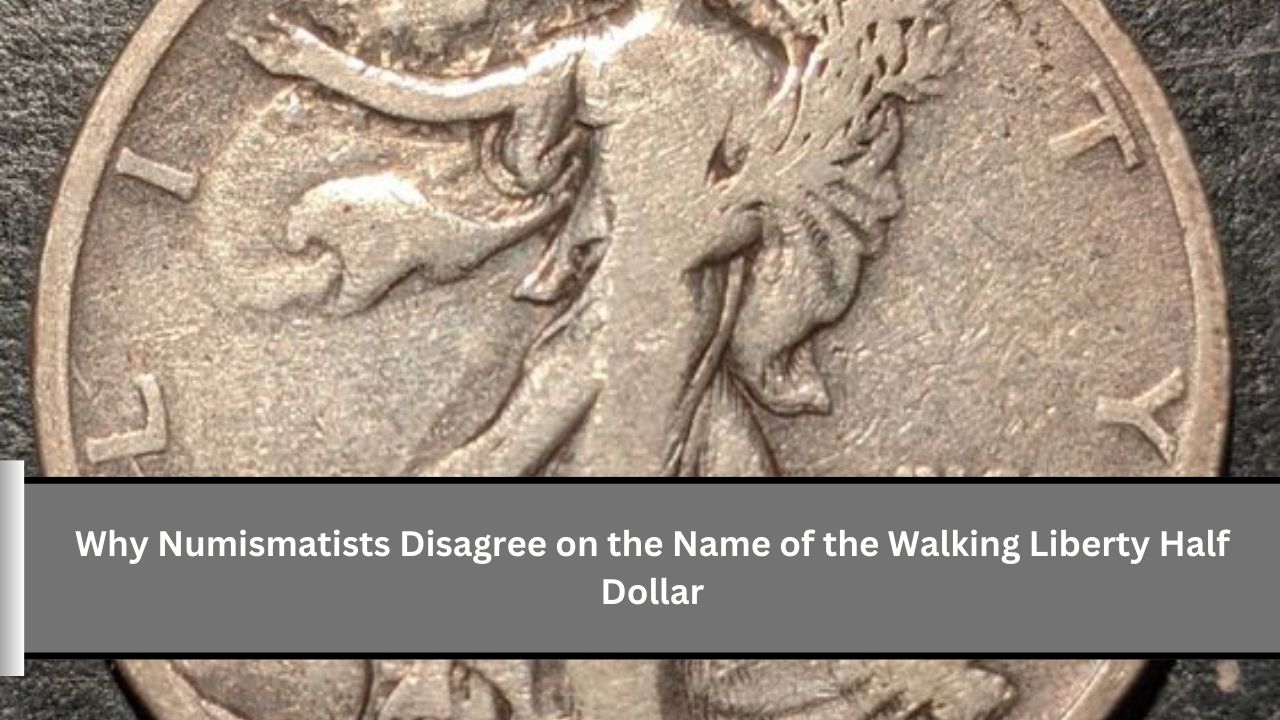The world of coin collecting is filled with debates, even over the names of iconic coins. One of the most discussed is the 1916–1947 half dollar. Is it called “Liberty Walking” or “Walking Liberty”? This article dives into the naming conventions of U.S. coins, highlighting the various perspectives from collectors, dealers, and experts. We’ll explore the reasoning behind these names and why they matter to numismatics enthusiasts.
What’s in a Name?
Coin collectors often develop strong preferences when it comes to naming their prized pieces. A prime example is the half dollar featuring a figure of Liberty. Some prefer the term “Walking Liberty,” while others favor “Liberty Walking.” It’s more than just a matter of wording; each name evokes a different image and interpretation of the coin’s design.
The Origins of “Walking Liberty”
The “Walking Liberty” half dollar was designed by Adolph A. Weinman and first minted in 1916. The U.S. Mint describes the design as Liberty in full stride, her right hand extended, and branches of laurel and oak in her left. But the name itself is where things get tricky.
According to the 1916 Mint Report, the coin was initially referred to as “Liberty Striding.” Over the years, it evolved into “Liberty Walking,” which was the preferred term in early editions of the Red Book, a popular guide among coin collectors. However, many collectors, dealers, and publications started using “Walking Liberty,” believing it flowed better linguistically.
A Quick Look at the Walking Liberty Half Dollar
| Feature | Description |
|---|---|
| Designer | Adolph A. Weinman |
| Minting Years | 1916 to 1947 |
| Obverse Design | Liberty walking, holding branches of laurel and oak |
| Initial Naming | Liberty Striding |
| Current Common Names | Walking Liberty, Liberty Walking |
| Influential Publication | The Red Book (Official Guide) |
Opinions from Experts
Coin collectors and experts weigh in on the debate. Frank Colletti, a Red Book collector, and die-variety specialist Ken Potter, lean towards “Walking Liberty” because it feels more natural. Bill O’Rourke, author of Coin World’s “Found in Rolls” column, breaks it down grammatically, stating that “Walking” is an adjective describing what Liberty is doing, making “Walking Liberty” the correct term.
Heritage Auctions Senior Cataloger Mark Borckardt humorously compares the debate to calling a “Draped Bust” coin “Bust Draped,” which he believes sounds awkward. His point underlines how language plays a significant role in how coins are perceived.
The Red Book’s Influence
The Red Book, widely regarded as the “bible” for naming coin types, has been a key influence in this debate. The first edition called the half dollars “Liberty Standing,” but by the 9th edition in 1955, it had changed to “Liberty Walking.” Over time, the Red Book’s naming conventions shaped how collectors and dealers referred to these coins, and its terminology became the standard.
Other Coin Naming Debates
The “Walking Liberty” half dollar isn’t the only coin with a debated name. The “Mercury” dime is another example. Officially called the “Winged Liberty Head” dime, it’s often referred to as the “Mercury” dime due to its resemblance to the Roman god Mercury. Even though experts like Steve Roach use the full name in formal writing, many collectors prefer the shorter, more familiar term “Mercury.”
A Language Shaped by Tradition
One of the challenges in numismatics is changing outdated terminology. Bill O’Rourke mentions how dealers continue to advertise “double dies” instead of the correct term “doubled die.” Despite efforts to correct these terms, old habits die hard, and collectors often stick to the names they’re familiar with.
The U.S. Mint’s current descriptions also influence how coins are named. For example, the American Eagle Silver Bullion coins still refer to the design as “Walking Liberty,” further solidifying the term in modern coin collecting.
A Personal Take on Naming
Steve Roach, a numismatist and editor, favors “Walking Liberty” but acknowledges that variations like “Walkers” are used informally among dealers. He also highlights how the design could have conveyed more forward motion if Liberty’s leading leg had been positioned differently.
Roach’s observations show how subjective coin naming can be, often depending on personal preference or stylistic choices rather than strict rules.
Conclusion
While it might seem like a small detail, the name of a coin carries significant weight in the numismatics world. Whether you prefer “Liberty Walking” or “Walking Liberty,” the important thing is the coin’s rich history and its contribution to American coinage. Numismatists continue to debate these names, but one thing is clear: the legacy of these coins remains timeless.
FAQs
What is the “Walking Liberty” half dollar?
The “Walking Liberty” half dollar is a U.S. coin designed by Adolph A. Weinman, minted from 1916 to 1947.
Is it correct to call it “Walking Liberty” or “Liberty Walking”?
Both terms are used by collectors, but “Walking Liberty” is more commonly accepted.
Why does the naming of coins matter in numismatics?
The naming of coins matters because it affects how collectors and dealers communicate about them.
How did the name “Walking Liberty” evolve over time?
The name “Walking Liberty” evolved from earlier terms such as “Liberty Striding” and “Liberty Standing,” as documented in the 1916 Mint Report and various editions of the Red Book, which is a key reference for coin collectors.
What are some other coins with debated names?
Other coins with debated names include the “Mercury” dime, officially called the “Winged Liberty Head” dime.

